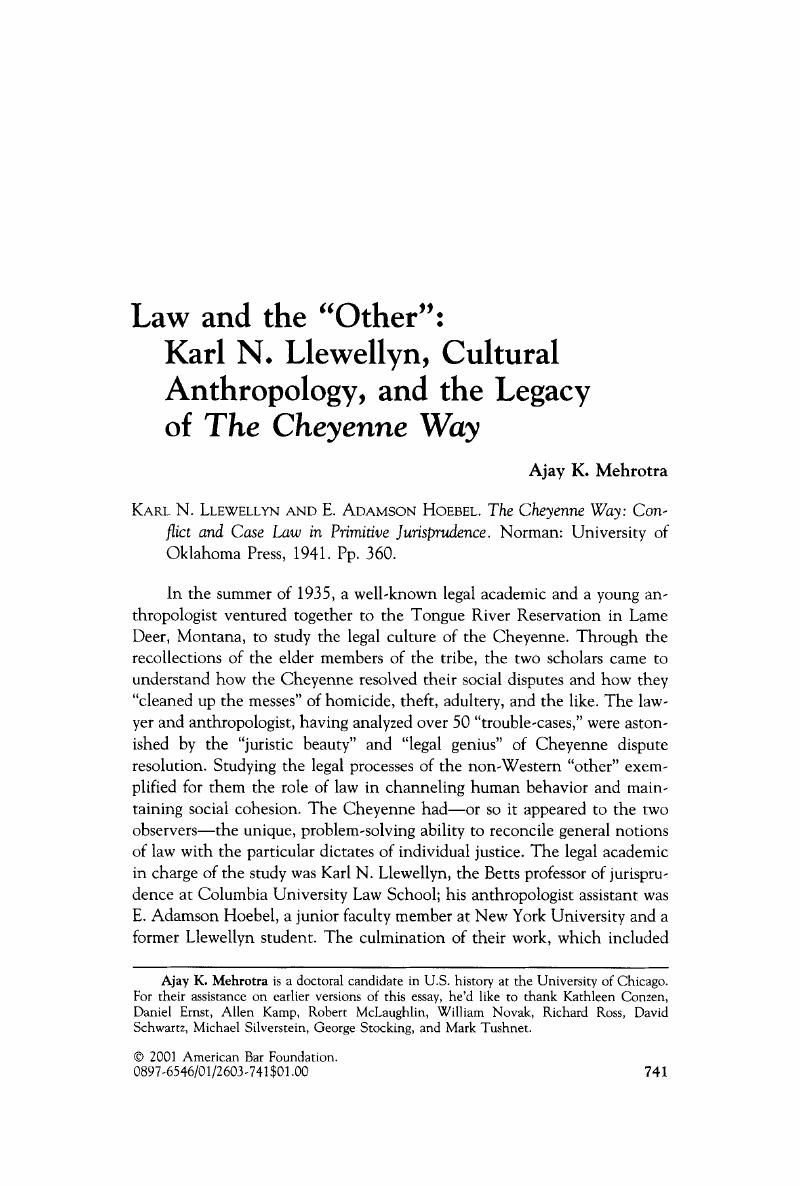Crossref Citations
This article has been cited by the following publications. This list is generated based on data provided by Crossref.
Conley, John M.
and
O'Barr, William M.
2002.
Back to the Trobriands: The Enduring Influence of Malinowski's Crime and Custom in Savage Society.
Law <html_ent glyph="@amp;" ascii="&"/> Social Inquiry,
Vol. 27,
Issue. 4,
p.
847.
Finchett-Maddock, Lucy
2010.
Finding Space for Resistance Through Legal Pluralism: The Hidden Legality of the UK Social Centre Movement.
SSRN Electronic Journal,
Einhorn, Bruce J.
and
Berthold, S. Megan
2015.
Adjudicating Refugee and Asylum Status.
p.
27.





